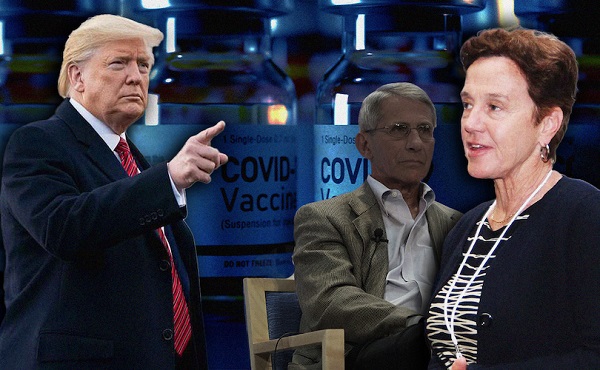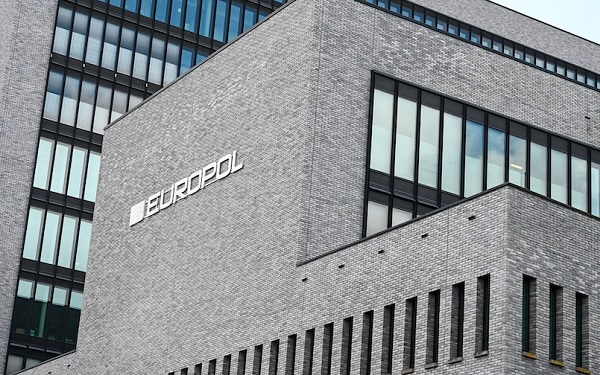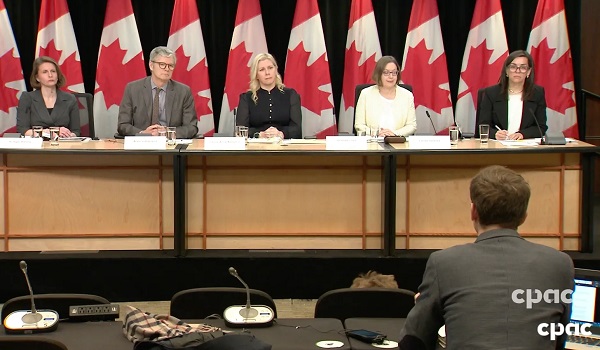Opinion
Wouldn’t we save money and have nicer lawns if we just did our business behind a bush?

It costs $73/tonne to toss out my coffee cup. That is the cost of taking solid waste to the waste management site. It costs about $40 per month for my waste water to get treated and dumped into the river.
Would it not be cheaper to just burn my solid waste in the back yard or dump it over the fence or drop it along some dirt road, or in some farmer‘s field? It might be cheaper in the short term but if everyone did it, I can only imagine.
Speaking of farmers’ fields, you know they have manure spreaders for spreading manure on their fields. So manure is a good fertilizer, good for plants. Interesting because that is part of the reason why we pay $40 per month cleaning our wastewater.
Would it not be cheaper if we all just did our business in our gardens or dumped it in the streets and let the rain wash it away or let it fertilize the ground?
Can you imagine how much crop we could get if 7 billion people left their fertilizer on the ground? Now if only we had CO2 to help our crops grow?
You can see where I am going with this and how foolish it appears, but the argument against carbon pricing is very similar.
How many times have we heard that CO2 is not a pollutant but is a necessity for plant growth. Water is necessary too, but nobody wants a flood or a tsunami.
It took many generations, plagues and courage to get the sewage off the streets and solid waste into landfills. It took generations to get recycling into the mainstream, it will take longer to accept a price on carbon.
We have 3 levels of pollution solid, liquid and gas. We pay $73 per tonne to manage our solid waste and since carbon pricing is based on a solid’s scale why not charge $73 per tonne of carbon?
We all understand about our need for clean air just as we understand our need for clean water and removing our trash. We recycle while many third world nations may not, we treat our wastewater while many third world nations may not, so why don’t we clean our air or at least make those who pollute, pay?
My fire and flood insurance is going up due to increased fires and floods, due to climate change, due to CO2, and health care related costs are going up and the list goes on so I guess everyone is paying for our free air pollution.
Shouldn’t the polluters pay a little bit more?
Just asking.
Business
Will Trump’s ‘Liberation Day’ Tariffs End In Disaster Or Prosperity?


From the Daily Caller News Foundation
By J.D. Foster
“Liberation Day” has come. So what does it mean? Beats the hell out of me.
What we know is that President Trump’s avalanche of tariffs was to hit a peak on April 2; not end, mind you; not necessarily “the” peak, as more could be on the way; but a peak.
No Trump policy more completely breaks with America’s past than his “beautiful” tariffs on just about everything coming into the United States from just about anywhere.
Will this new policy liberate American manufacturing from foreign shackles? Will it usher in a new era of prosperity, keeping in mind the United States had for many years the consistently best-performing economy in the industrialized world, even overcoming the many inane obstacles erected by the Biden-Harris Administration?
Or will it leave the United States isolated, friendless, and weakened?
The correct answer at this point is no one knows, not even the bloviating talking heads on TV confidently predicting demise or Shangri-la.
Think of it this way. Suppose you’re a restaurant chef and a woman hands you a new recipe. Her father turns 75 soon and they want to have a party at the restaurant. The recipe is for the father’s favorite dish, one her mother made for years.
The recipe looks old, with odd ingredients and processes you’ve not seen before. Now judge it as a chef.
You can’t. Even as you start chopping and dicing, mixing ingredients as instructed, you’re not too sure how this is going to turn out. You have to wait until the dish is on the plate and taste it.
That’s the case with Trump’s tariffs. How will this all turn out? It’s too soon to tell.
The stock market sure doesn’t like it, but why should it? The investor class doesn’t understand this any better than you do. What they do understand is this new policy has upended assumptions and created enormous new uncertainties. We know that dish as those ingredients are always good for a big pullback.
Much of the confusion arises because we don’t know the underlying policy and likely this uncertainty is intentional. Trump likes keeping his counterparts, in this case our trading partners, guessing. If it means Americans are confused for a bit, Trump’s cool with that. Breaking eggs to make an omelette. It will pass and America will be great again afterward. Bon appetite.
If the core policy is to erect massive and mostly permanent tariff walls behind which American firms can hide, then we know how this will turn out: America, meet the dustbin of history.
If the core policy is to force our trading partners to deal with America fairly by reducing their trade barriers after which Trump will remove his tariffs, then this could turn out very well. Tariffs (and non-tariff barriers) in the U.S. and those of our trading partners would fall, reinvigorating the free trade that has energized prosperity for decades.
Which is it? Walls and doom or freedom and prosperity? Again, too early to tell.
Whatever else Trump does in his second term, these tariffs will define his presidency, akin in consequence to Ronald Reagan’s pro-growth tax cuts and Joe Biden’s inflation.
Trump in his second term clearly lives by the saying, “go bold or go home.” He’s got “bold” down pat. We will see over the next year or so whether he and the Republicans go home. Has he liberated Democrats from any fear of Republicans in the mid-terms or in 2028, or he’s liberated America from any fear of Democratic socialism and wokism returning in our lifetimes. The chips are all-in. Soon we will see the cards. Uncertainty, indeed.
JD Foster is the former chief economist at the Office of Management and Budget and former chief economist and senior vice president at the U.S. Chamber of Commerce. He now resides in relative freedom in the hills of Idaho.
International
FREE MARINE LE PEN!’: Trump defends French populist against ‘lawfare’ charges

From LifeSiteNews
‘The Witch Hunt against Marine Le Pen is another example of European Leftists using Lawfare to silence Free Speech, and censor their Political Opponent,’ Donald Trump on Truth Social.
U.S. President Donald Trump defended French populist Marine Le Pen as a fellow victim of “lawfare” after the popular opposition leader was barred from the 2027 French national election due to embezzlement charges.
“The Witch Hunt against Marine Le Pen is another example of European Leftists using Lawfare to silence Free Speech, and censor their Political Opponent, this time going so far as to put that Opponent in prison,” Trump wrote Thursday night on Truth Social.
As of Sunday, Le Pen, head of the National Rally (RN) party, was leading polls to win the presidential election, being 11 to 17 points ahead of the party of the globalist President Emmanuel Macron.
On Monday, Le Pen was hit with a five-year ban on running for elected office and sentenced to four years of prison on charges of “misuse of EU funds,” although two years were suspended and the remaining two would be served through house arrest.
Le Pen and her co-defendants were specifically accused of illegally using European Parliament funds for party employees who “seldom (or never) dealt with affairs in Brussels or Strasbourg,” of which the court held Le Pen personally responsible for €474,000.
Her prison sentence has been paused as her lawyer appeals the ruling, but the ban on her running for office nevertheless remains in force, despite the fact that legal penalties are typically delayed during the appeals process, according to Politico.
In his Truth Social post, Trump accused French leftists of using a “minor charge” against Le Pen as a pretext to block her from office.
“Just before what would be a Big Victory, they get her on a minor charge that she probably knew nothing about – Sounds like a ‘bookkeeping’ error to me,” wrote Trump.
“It is all so bad for France, and the Great French People, no matter what side they are on. FREE MARINE LE PEN!” he concluded.
Conservatives across Europe have rallied to Le Pen’s defense following Monday’s ruling, similarly slamming the decision as a pretext to exclude her from politics.
“I am Marine!” wrote Hungarian Prime Minister Viktor Orbán on X Monday, in a cry of solidarity with his fellow anti-globalist.
“This is nuts,” remarked former Greek finance minister Yanis Varoufakis on X. “Lawfare is wrong whomever it targets. And it is stupid to boot. France’s neofascists will only benefit from this, just as the MAGA lot did. A panicking illiberal establishment across the West is diving headlong into a totalitarian pit.”
“I am shocked by the incredible tough verdict against Marine Le Pen,” chimed in Geert Wilders, leader of a Dutch populist party that won a national election in 2023. “I support and believe in her for the full 100% and I trust she will win the appeal and become President of France.”
Russian President Vladimir Putin’s spokesperson Dmitry Peskov has called the ruling a “violation of democratic norms,” and Reform UK party leader Nigel Farage denounced Le Pen’s “cancellation” as based on “a very trumped-up charge.”
“In this country we have nine county council elections on 1 May that won’t happen, and may not happen for years,” said Farage, according to the BBC. “And in France, they cancelled a candidate. A candidate that would, without doubt, have won the next French presidential election. And you know what, if looks to me like a very trumped-up charge.”
“They will not succeed in silencing the voice of the French people,” said Santiago Abascal, head of the pro-family, right-wing Vox party in Spain.
Italy’s Deputy Prime Minister Matteo Salvini urged Le Pen to keep fighting, calling her verdict a “bad film” akin to political shut-outs occuring in other countries like Romania.
“We will not be intimidated, we will not stop: full speed ahead my friend,” said Salvini.
-

 2025 Federal Election2 days ago
2025 Federal Election2 days agoHighly touted policies the Liberal government didn’t actually implement
-

 Freedom Convoy2 days ago
Freedom Convoy2 days agoFreedom Convoy leaders Tamara Lich, Chris Barber found guilty of mischief
-

 COVID-192 days ago
COVID-192 days agoTrump’s new NIH head fires top Fauci allies and COVID shot promoters, including Fauci’s wife
-

 2025 Federal Election2 days ago
2025 Federal Election2 days agoWill Four More Years Of Liberals Prove The West’s Tipping Point?
-

 Courageous Discourse2 days ago
Courageous Discourse2 days agoEurope Had 127,350 Cases of Measles in 2024
-

 2025 Federal Election1 day ago
2025 Federal Election1 day agoPoilievre promises to drop ‘radical political ideologies’ in universities
-

 Crime2 days ago
Crime2 days agoEuropol takes out one of the largest pedophile networks in the world with almost 2 million users
-

 Automotive1 day ago
Automotive1 day agoAuto giant shuts down foreign plants as Trump moves to protect U.S. industry




